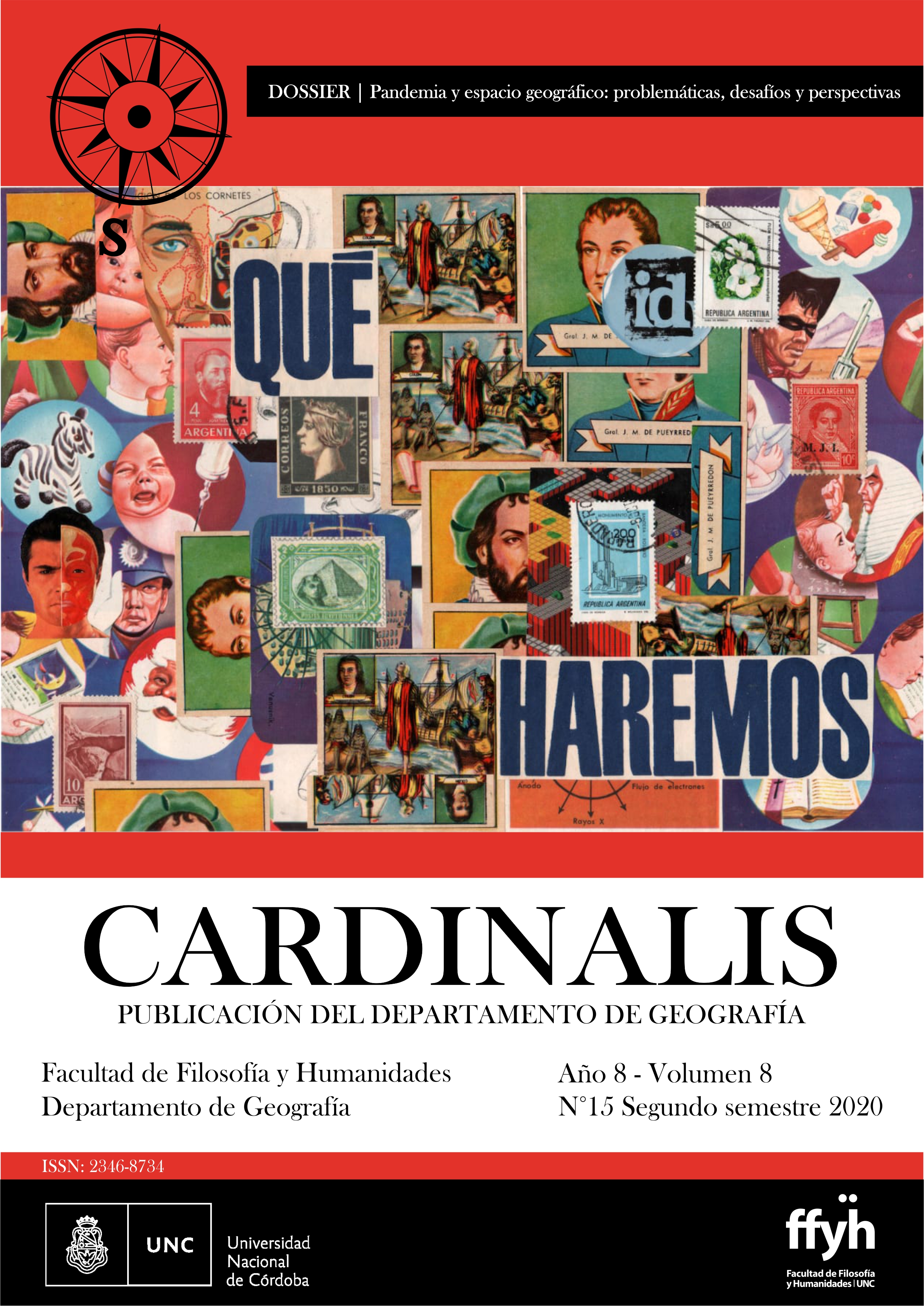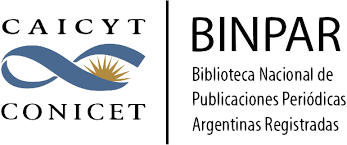Spatial analysis; Geographic information systems; Thematic cartography; COVID-19; Luján River Basin (Province of Buenos Aires, Argentina)
Abstract
Geography as space science is presented as the discipline with the greatest potential for the study of the spatio-temporal behaviour of COVID-19. Thus, Health Geography allows contributions to be made at a level of spatial targeting, based on cartographic and numerical results aimed at analyzing the spatial distribution and evolution of diseases. This work develops the methodological procedures, typical of quantitative spatial analysis based on the use of Geographic Information Systems, which focused on the development of a geographic database with variables related to COVID-19, from the Ministry of Health of the Nation, from which a great variety of thematic cartography was generated aimed at the spatial analysis of the behavior of this virus, such as the map of the infection rate per thousand inhabitants and the spatial evolution between the months of March and August of this year. The results show a marked spatial differentiation of the incidence of infections in the districts of the Luján river basin, defining areas of greater dynamism in the spread of the virus. These results are displayed as contributions that Geography can make in the field of territorial planning and management.
Downloads
Downloads
Published
Issue
Section
License

This work is licensed under a Creative Commons Attribution-NonCommercial-ShareAlike 4.0 International License.
Aquellos autores/as que tengan publicaciones con esta revista, aceptan los términos siguientes:- Los autores/as conservarán sus derechos de autor y garantizarán a la revista el derecho de primera publicación de su obra, el cuál estará simultáneamente sujeto a la Licencia de reconocimiento de Creative Commons (indicada abajo) que permite a terceros compartir la obra siempre que se indique su autor y su primera publicación esta revista.
- Los autores/as podrán adoptar otros acuerdos de licencia no exclusiva de distribución de la versión de la obra publicada (p. ej.: depositarla en un archivo telemático institucional o publicarla en un volumen monográfico) siempre que se indique la publicación inicial en esta revista.
- Se permite y recomienda a los autores/as difundir su obra a través de Internet (p. ej.: en archivos telemáticos institucionales o en su página web) antes y durante el proceso de envío, lo cual puede producir intercambios interesantes y aumentar las citas de la obra publicada. (Véase El efecto del acceso abierto).

Esta obra está bajo una Licencia Creative Commons Atribución-NoComercial-CompartirIgual 4.0 Internacional.






